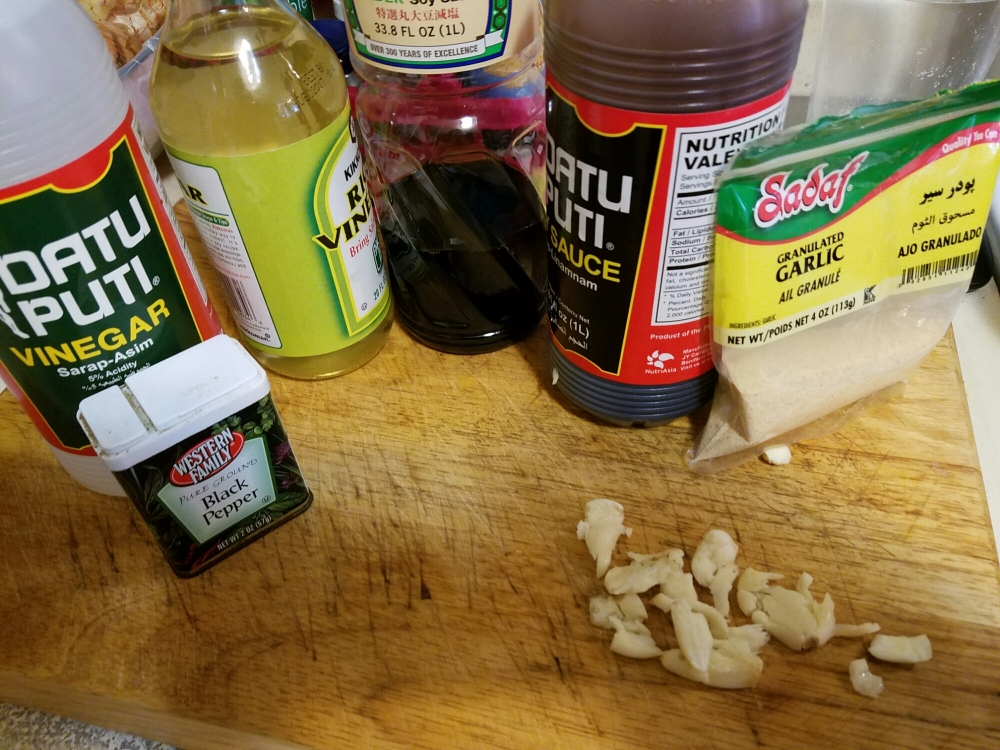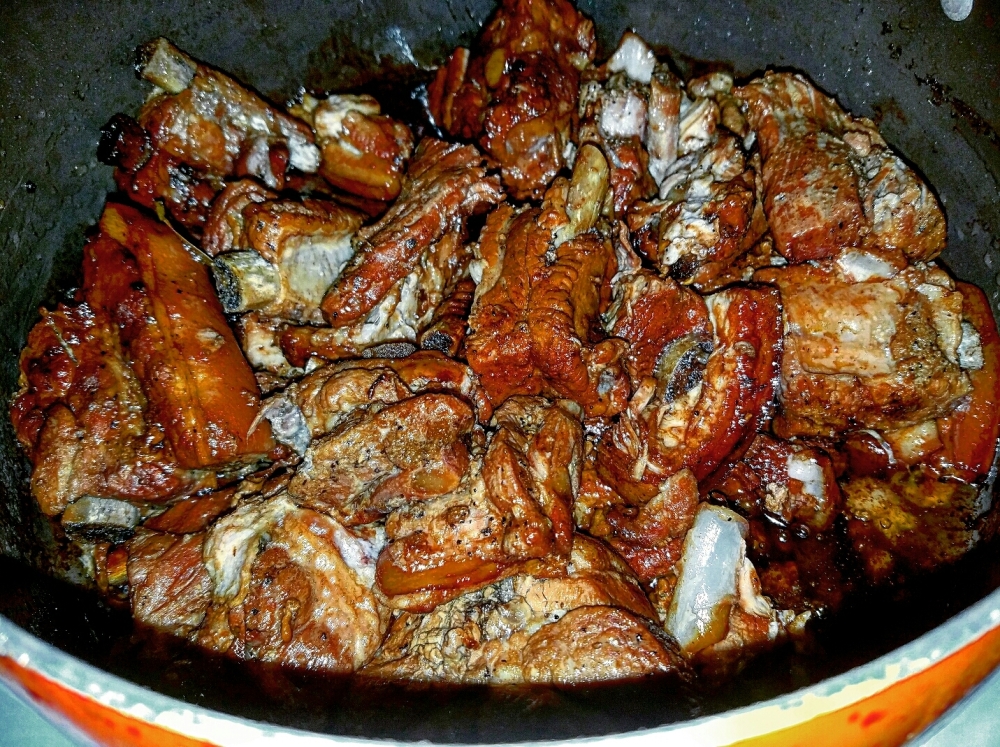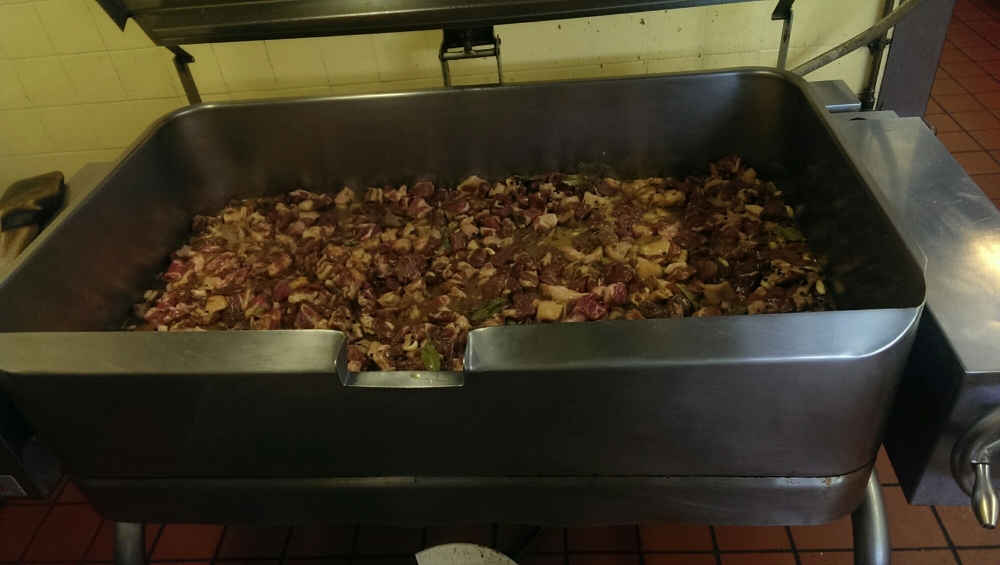I have been on hiatus for a while. Still in need of a laptop and a good camera so I can post more often. I have lots of recipes and techniques I have learned and wanted to share.
Anyway, here’s a staple at almost any Filipino home.
Adobo is a technique used to cooking tough meats. In the course of Philippine history it travelled across the country and the recipe varied mostly from preference and availability of ingredients.
Different parts of the country produces different kinds of vinegar. It wasnt until later that soy sauce was used as a main ingredient.
Just like anything else, you can add your own spin to this cooking technique. The basic recipe is braising the meat in vinegar and soy sauce. Since adobo is a technique, you can use any other acid and savory mix.
Equal parts cane vinegar and soy sauce (regular sodium), bay leaf, black peppercorn, and crushed garlic. Voila, adobo. The Spaniards called it that, because it was so similar with theirs.
I like mine dry, which we call “adodong matanda” (meaning old adobo). Its braised until the liquid is syrupy.
My variation which yields with a somewhat sweet sauce is using half rice vinegar, half cane vinegar, then i get the soy sauce with kelp. Its a korean brand soy sauce. It has a deeper flavor and the sauce has sweet notes without adding sugar.
I crush the garlic with the paper and put it in.
The fat from the protein can be used to lightly sear the stewed meat. I like it that way too, since it adds another layer of flavor.
My backpocket Recipe is using pork. A lb. of pork belly with the bones, a lb. of pork ribs, cut into 2″ size, two bay leaves, a tbsp. of crushed black peppercorn, a whole garlic bulb crushed with the paper. 1 cup cane vinegar, 1 cup rice vinegar, 2 cup of soy sauce with kelp and half a cup of water. No pre searing, not even marinated overnight. Just layer the meat in a large enough pot (i use a large braising pot). Add everything and let it braise in medium low). An hour and a half is all it takes. The vinegar is a great tenderizer. Unless you want mushy meat.
Pictured here are cane vinegar, rice vinegar, light soy sauce (I ran out of the with with kelp), regular sou sauce, granulated garlic and some fresh crushed garlic. Not pictured is the crushed black pepper.
The meat and the rest of the ingredients, getting ready to top stew.
The end product. It’s a dry version of adobo. The fat is rendered perfectly and with a little hint of sweetness from the caramelized vinegar and soy sauce. You can let it fry a little so you get some crispy pieces. Serve with rice or your favorite starch.
We have tried sous vide with this. It was good, but didnt have that caramelization when braised.
Another version that i favor is using beer instead of soy sauce. We call it “adobado”, which means, cooked like adobo. This works great with pork hock and beef ribs.
I have stuck with this recipe for 25 years, and the only thing that changed was using soy sauce with kelp.
A little anecdote about my recipe. My chef instructor was rotating us for different shifts. I was in charge of the main proteins for 2 weeks. We had a large delivery of pork belly and ribs. Bbq was already tired and done by so many students, so i wanted to do something else. I checked the recipe book and there was a recie for adobo. It was ridiculous. Too many ingredients. I told my chef im cooking something new. 88 lbs. of pork later a large tilt fryer and all it took was an hour to sell out.
Here’s a photo of the big batch of adobo using the same recipe. This is about 80-100 lbs of meat. It was sold out in merely 30 minutes.



